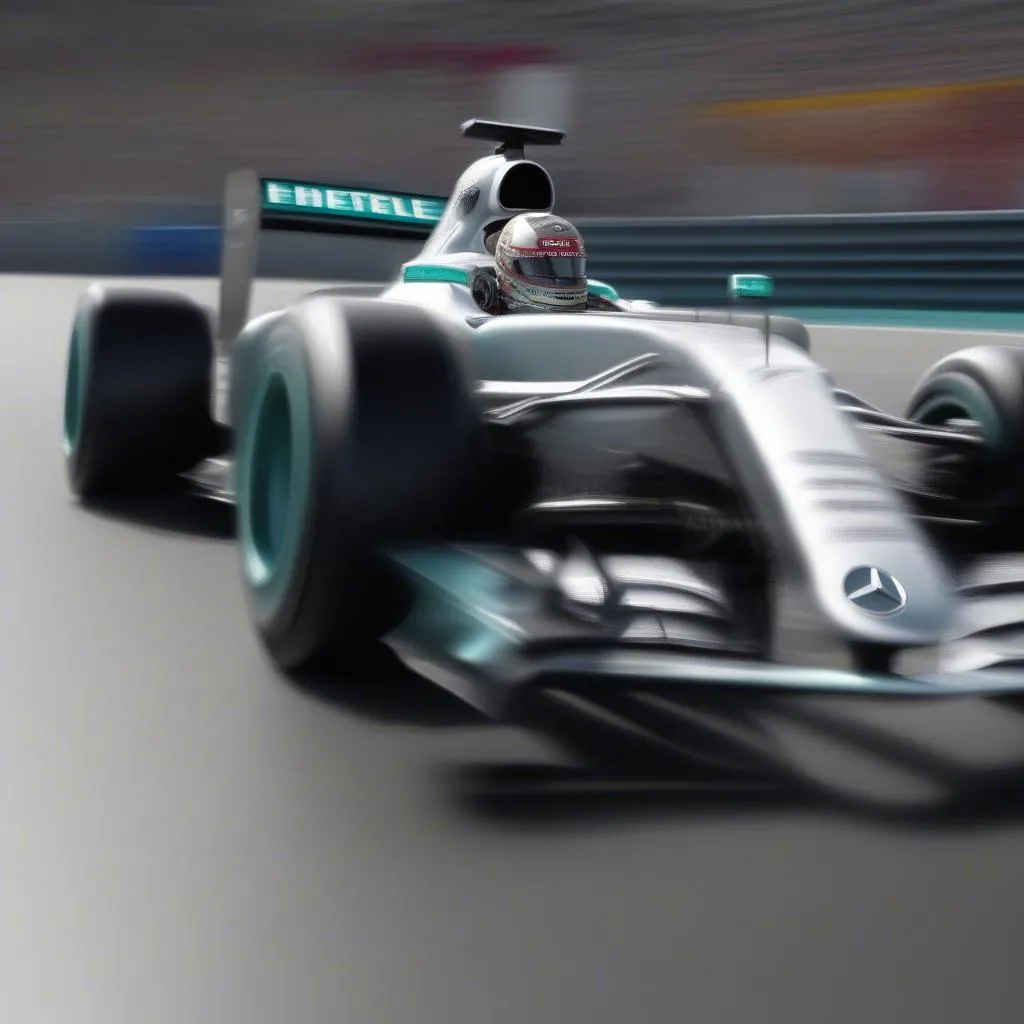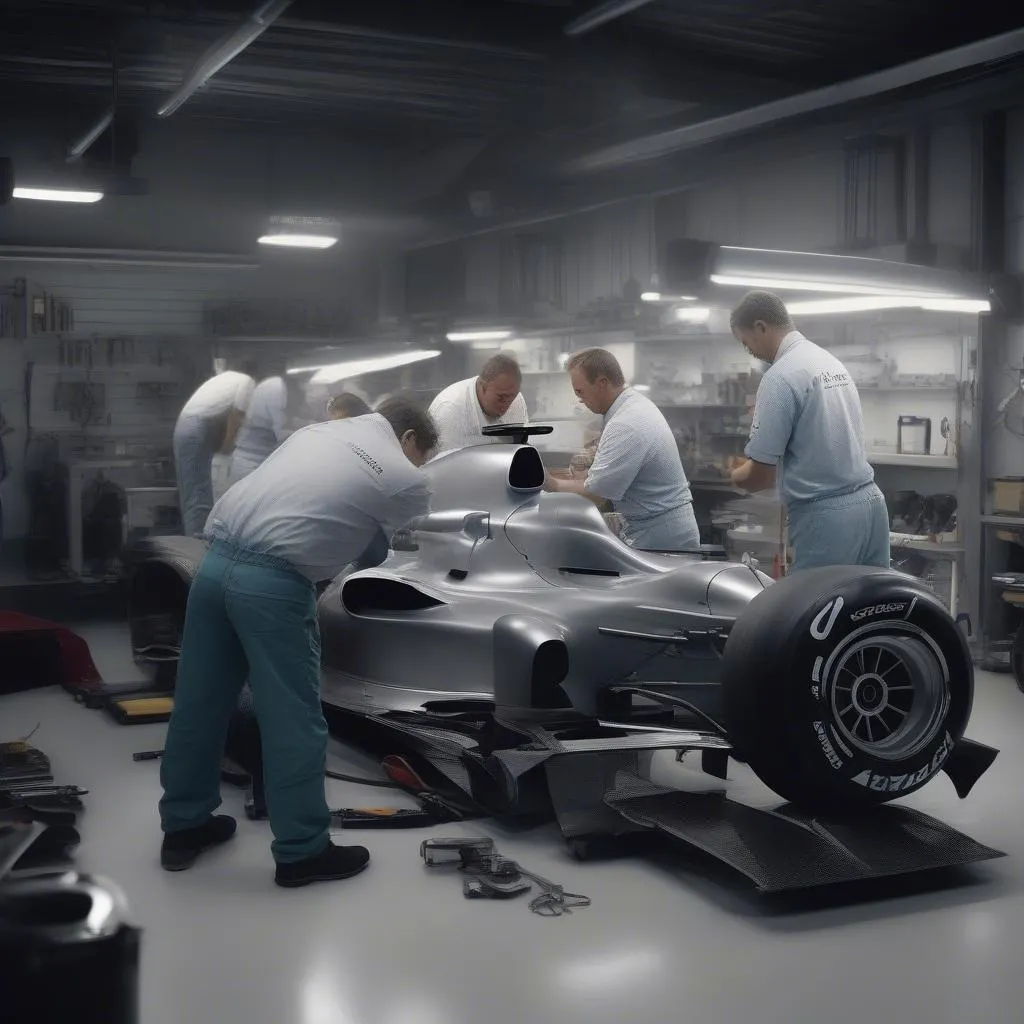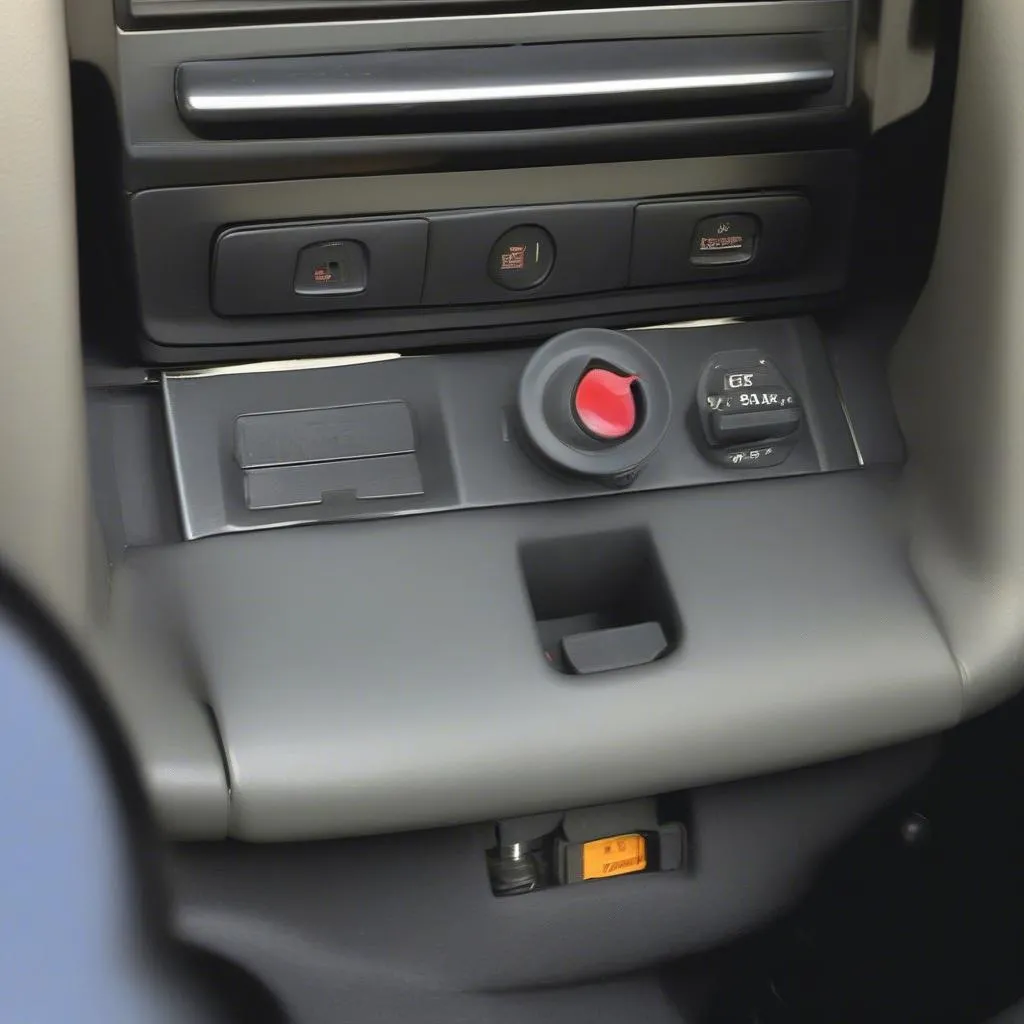The Mercedes W13, while a marvel of engineering, hasn’t been without its teething problems. Many enthusiasts and owners alike have voiced concerns about specific performance issues, most notably the infamous “porpoising” effect. This comprehensive guide aims to delve deep into the “Mercedes W13 fix,” exploring common issues, potential solutions, and offering insights into how these can be addressed.
Understanding the Mercedes W13 Issues
Before jumping into fixes, it’s crucial to understand the challenges. The W13, with its radical design philosophy, faced some unexpected hurdles during its development.
1. Porpoising: The Unwanted Bouncing
One of the most visible and talked about issues was the W13’s tendency to “porpoise” – a violent bouncing motion at high speeds. This aerodynamic phenomenon, caused by rapid fluctuations in downforce, hampered the car’s performance and stability.
“The porpoising we saw with the W13 was a direct result of the new aerodynamic regulations,” says automotive engineer Dr. Emily Carter, author of “Aerodynamics in Motorsport.” “The ground effect aerodynamics, while intended to improve racing, created this unexpected side effect.”
2. Drag Limitations: A Need for Speed
Beyond porpoising, the W13 grappled with higher drag compared to its rivals. This impacted the car’s straight-line speed, making it challenging to compete for those all-important overtaking maneuvers.
 Mercedes W13 drag
Mercedes W13 drag
Addressing the Challenges: The Mercedes W13 Fix
Mercedes, known for its engineering prowess, didn’t stand still. The team embarked on a rigorous development path to rectify these issues, focusing on both aerodynamic refinements and setup tweaks.
1. Aerodynamic Evolution: Taming the Beast
Addressing the porpoising required a deep dive into the W13’s aerodynamic DNA. Modifications to the floor, diffuser, and rear wing aimed to stabilize the airflow and minimize the disruptive downforce fluctuations.
2. Setup Adjustments: Finding the Sweet Spot
Beyond the hardware changes, Mercedes meticulously experimented with various setup configurations. This involved fine-tuning ride height, suspension geometry, and wing angles to strike an optimal balance between downforce and drag.
 Mercedes W13 mechanics
Mercedes W13 mechanics
FAQs: Mercedes W13 and Car Diagnostics
Q: Did Mercedes completely eliminate porpoising on the W13?
While not entirely eradicated, the porpoising issue was significantly reduced through the various fixes implemented by Mercedes.
Q: Can car diagnostic tools identify aerodynamic problems like porpoising?
While diagnostic tools are excellent for engine and electronic systems, they don’t directly detect aerodynamic issues like porpoising. These require specialized analysis of telemetry and sensor data.
Q: Where can I find reliable car diagnostic tools for Mercedes vehicles?
CARDIAGTECH offers a range of high-quality diagnostic tools tailored for Mercedes-Benz vehicles, helping you identify and resolve issues effectively. Learn More about Cardiagtech diagnostic solutions.
Conclusion: The Road to Redemption
The Mercedes W13’s journey exemplifies the iterative nature of motorsport development. While initial challenges were evident, the team’s relentless pursuit of improvement led to significant progress. The “Mercedes W13 fix” wasn’t a single solution but a series of carefully orchestrated steps that tamed the car’s initial shortcomings, showcasing the team’s dedication to innovation and excellence.


